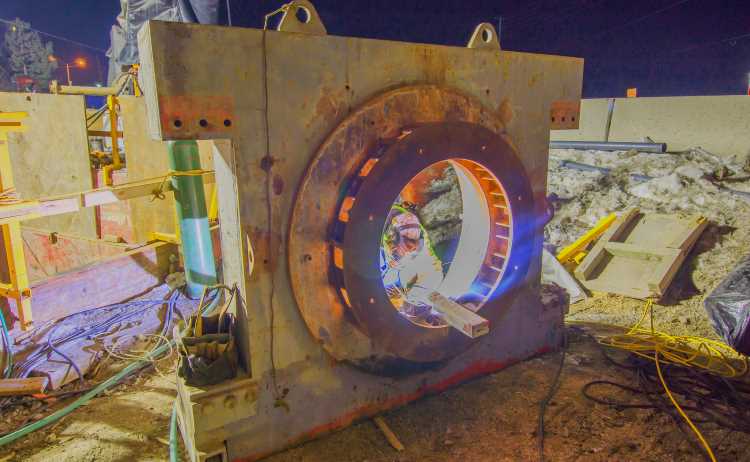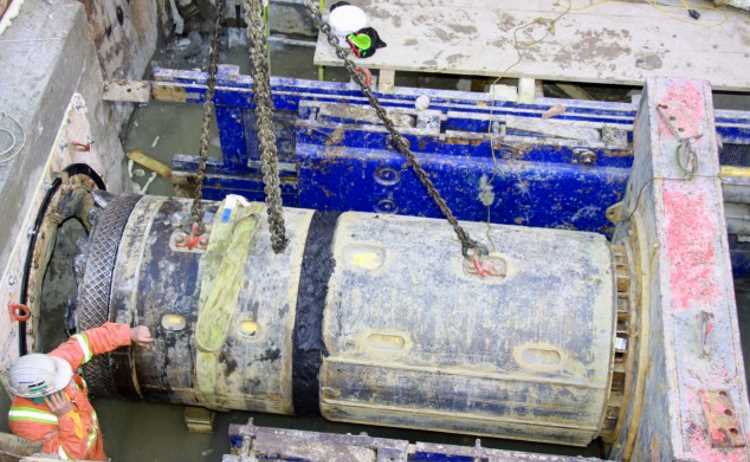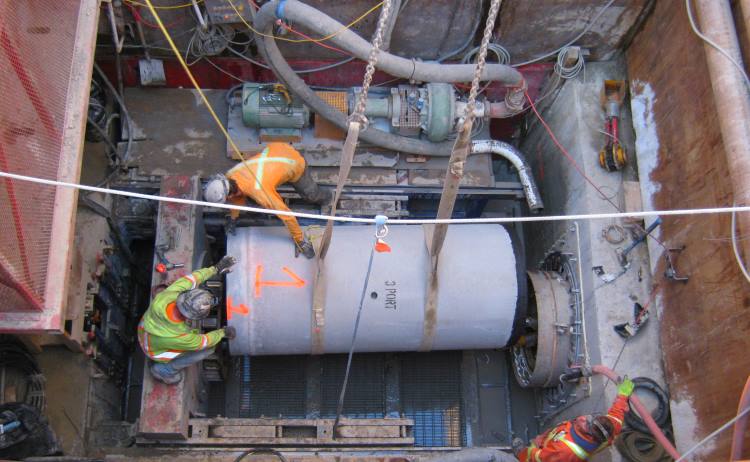MUNICIPAL > Distribution & Collection Systems
900mm Sanitary Trunk Sewer on Albion-Vaughan Road
Client: Regional Municipality of Peel
Location: Town of Caledon
Construction Value: $9,500,000
Services: Preliminary Design Report, Detailed Design, Contract Administration and Resident Inspection, SUE Level ‘A’ Investigation Post-Construction Services
Key Features
- 2.1 km of 900 mm sanitary trunk sewer on Albion-Vaughan Road from Mayfield Road upstream to the Albion-Vaughan Sewage Pumping Station by micro-tunneling with deep shafts at servicing manholes & deep trenching by open cut excavation
- Effective by-pass strategy using temporary pumping, piping and isolation chambers to maintain flows in the existing sewers and to keep the Pumping Station in continuous operation prior to decommissioning of the Pumping Station at the end of construction
- CP Rail tunnel crossing (MacTier Subn.) and approvals
- Effective traffic management strategies and construction staging including temporary pavement widening to minimize traffic disruption.
- Extensive stakeholder involvement with a “boundary road” involved between both local and regional municipalities and utility companies
The Albion-Vaughan Sanitary Trunk Sewer was needed to improve the existing wastewater servicing and to accommodate future development in the Bolton area of the Town of Caledon. The project involved the diversion of flows from the south part of the Bolton South Hill Subdivision from the existing trunk system along Coleraine Drive and along Highway 50 which is terminated at Mayfield Road.
The project delivery was under tight timing constraints to provide sewer capacity and an outlet to service to permit the land development that was underway within the area.
The Albion-Vaughan Road is a two lane “boundary road” with a 20m ROW, heavily traveled by commercial and commuter traffic (11,300 AADT). Overhead hydro (44 kV/27.6kV) on both sides of the Road severely limited the working area along the route for operating construction equipment.
Extensive stakeholder involvement was integral to the project delivery with a “boundary road” involved between both local and regional municipalities and utility companies, as well as the Railway.
Geotechnical conditions consisted of silty clay till and basal granular soils, along with cobbles and boulders. Dewatering was required for the construction of the shafts, tunnel and the open cut sections.
This project involved the construction of approximately 1 km of 900mm ID Sanitary Sewer by micro-tunneling including eight (8) deep shaft and five (5) separate micro-tunnel drives ranging in length from 100m to 260m using a Herrenknecht AVN800 TBM.
The micro-tunneling was performed through the winter using a 24 hour continuous operation to prevent the ground from closing around the pipeline (which would cause high jacking forces preventing forward movement of the tunnel boring machine); and to ensure drilling fluids do not freeze in the winter months, and to achieve the project schedule.
Sufficient work areas had to be identified designated at drive shaft locations for the set-up and operation of the micro-tunneling equipment that included the TBM Control Centre and Generator housed inside insulated enclosures, surface spoil settlement equipment and as well as an Excavator, Front-End Loader and Mobile Crane.
The tunnel sections traverse beneath several sub-surface utilities, Highway 50 (R.R.50) and CP Rail, consequently an extensive settlement monitoring program was put in place during the project.
Connections of the new sewer to the existing sewer system at both the downstream and upstream ends necessitated an effective by-pass strategy using temporary pumping, piping and isolation chambers to maintain flows in the existing sewer and to keep the Pumping Station in continuous operation during construction. Modifications were also made to existing sewer chambers upstream to redirect flows to the new sewer once it was complete and operational. Subsequently the existing Pumping Station was decommissioned, equipment was salvaged for reuse by the Region and the site was restored.









